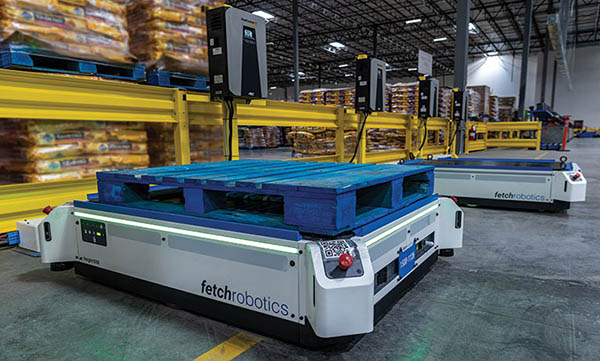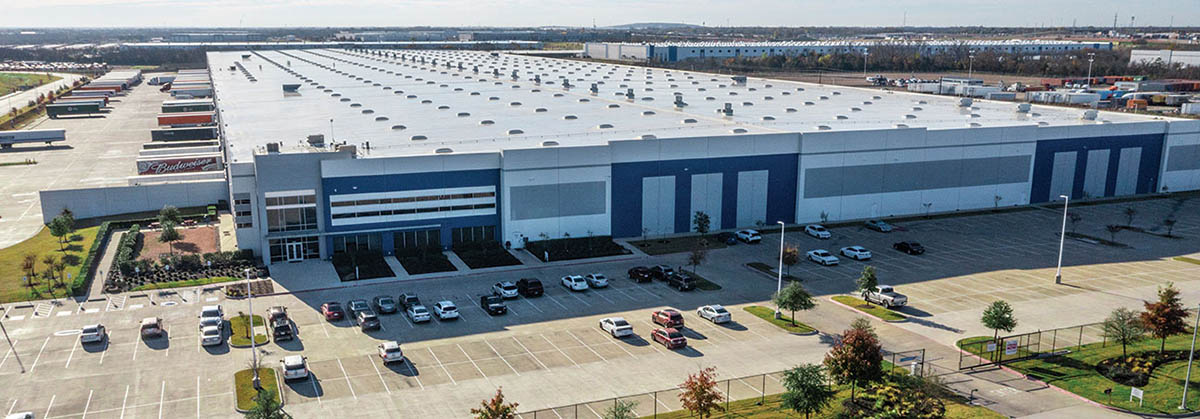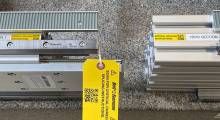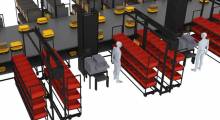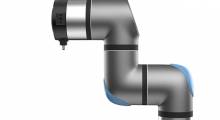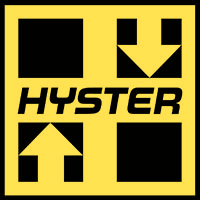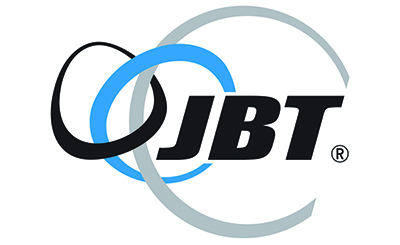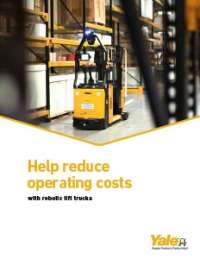“Integration” is considered a dirty word by many in industry. Sure, there are more software and automation tools than ever, but getting them to play nicely with one another can still be a major challenge. CJ Logistics wanted to add robots and other technologies to a 1.1 million-sq.-ft. facility in Dallas, but it needed to address integration with the help of SVT Robotics.
“This was a strategic initiative for our company,” said Laura Adams, vice president of technology, engineering systems, and solutions (TES) at CJ Logistics. “In this particular building, we wanted to deploy several technologies that CJ Logistics is using on a global basis. But no single provider could provide it all, so we needed a partner that had industry knowledge, had experience building integration points, and could integrate with our system.”
With a heritage extending back 90 years, CJ Logistics was formed from the 2013 merger of CJ Korea Express, Korea’s largest logistics firm, with CJ GLS. The Seoul, South Korea-based third-party logistics provider (3PL) has a portfolio spanning temperature-controlled warehousing, multimodal transportation, e-commerce order fulfillment, and last-mile delivery.
CJ Logistics has operated in the U.S. for nearly 50 years and acquired Des Plaines, Ill.-based DSC Logistics in 2018. Today, CJ Logistics operates in 155 cities across 40 countries, with 80 locations in North America. It has a significant presence in regulated industries, such as food and beverage, healthcare, and consumer packaged goods (CPG).
The company distributes food and CPG products at the pallet and case level to retail, club stores, and specialty stores on a regional basis. Its Dallas facility is dedicated to one customer.
CJ Logistics needed to bridge islands
The challenge of integrating disparate technologies often leads to “islands of automation,” whether intentional or not. What’s more, integration is often time-consuming and expensive, requiring a significant amount of custom coding. That can result in improved but suboptimal operations that never realize their full potential across all processes.
Not only did CJ Logistics need to integrate autonomous mobile robots (AMRs), automated lift trucks, electronic pallet trucks, and voice and vision technologies, but it also wanted them to to communicate with its warehouse management system (WMS) from Blue Yonder.
The solution was cloud-based integration from SVT Robotics. The Norfolk, Va.-based supply chain startup brings integration points from various hardware and software providers into its platform. It then enables a customer like CJ Logistics to integrate the systems it needs to create its processes.
Once a solution set is validated and deployed, it’s a permanent part of the 3PL provider’s toolbox and can be applied to other facilities and for other customers.
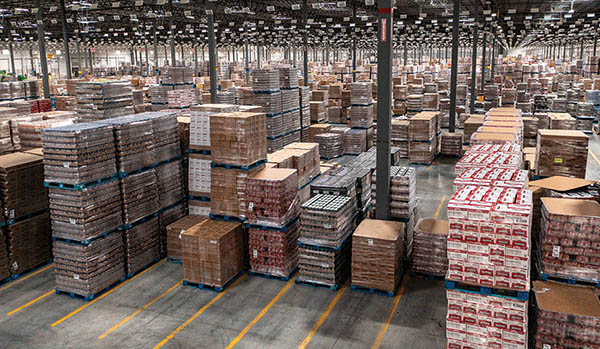
3PLs strive to lead with innovation
The project at the Dallas facility reflects two trends driving the 3PL industry today. The first is a quest for innovation as a competitive differentiator, and the second is the requirement to continually deliver value to customers.
Those requirements have always existed, but labor shortages, the COVID-19 pandemic, and the rising costs of energy and materials have contributed to a shifting business environment.
“We have always been focused on creating customer value through the total cost of the system, transforming business processes, improving service, and driving growth and change,” said Kevin Coleman, co-CEO of CJ Logistics America. “Today, our customers are asking us how we can challenge the status quo to deal with the changes in consumer demand patterns.”
Part of that shift is a change in focus from handling at the lowest unit cost within a facility to a focus on the cost of the total end-to-end process. In that scenario, an increase in handling costs inside the four walls of a facility might result in a lower total end-to-end cost.
“Now, with COVID, we’re experiencing capacity constraints,” Adams said. “All of that means that the solution we provide today needs to be flexible enough to adapt to what we might have to do in the future.”
In addition to changing consumer demand, CJ Logistics is facing increasing customer complexity because of mergers and acquisitions, plus SKU proliferation. (The Dallas facility handles about 4,000.) The logistics industry is implementing automation at higher levels than even in the recent past.
“The technology space is evolving fast,” said Coleman. “In the past, the solutions were not portable or flexible, and today they are.”
“On top of that, the pandemic is forcing all of us to look for ways to eliminate touches in the supply chain to create a safer work environment and to make up for the fact that there just aren’t enough people to get orders out the door without automation,” he added. “The conversations now are that we have to do something different to service our customers.”
Dallas distribution center built for efficiency
CJ Logistics opened its Dallas distribution center as a greenfield facility late in 2019. The project involving SVT Robotics got under way early the following year, before the pandemic. Adams described it as “a strategic initiative” on behalf of a customer that wanted to see an increase in throughput.
At the time, the Dallas labor market was tight but manageable, so the 3PL didn't focus initially on how to make up for a lack of labor. Instead, “the question was, 'What can we do differently to generate labor efficiencies the right way and reduce travel distances?'” Adams recalled. “There wasn’t a specific timeline to complete the project. Rather, we wanted to make sure we had a cost-effective solution.”
The goal was to introduce automation to reduce the human element in non-value-added processes, such as pallet movement, and reduce the touches and travel time required for value-added processes such as case picking. The distribution center handles 38 million to 40 million cases annually.
The tool kit for achieving those goals would come from the technologies CJ Logistics was already deploying on a global basis, including AMRs from Fetch Robotics, autonomous forklifts (AFLs) from JBT, and electronic pallet trucks (EPTs) from Hyster-Yale. The company also used voice- and light-directed picking, which was later augmented by vision-directed picking technology from Ox Technology.
An automation road map
CJ Logistics expected AMRs to reduce the amount of walking required of associates in case picking. They could remain in a zone while the robots traveled from pick location to pick location.
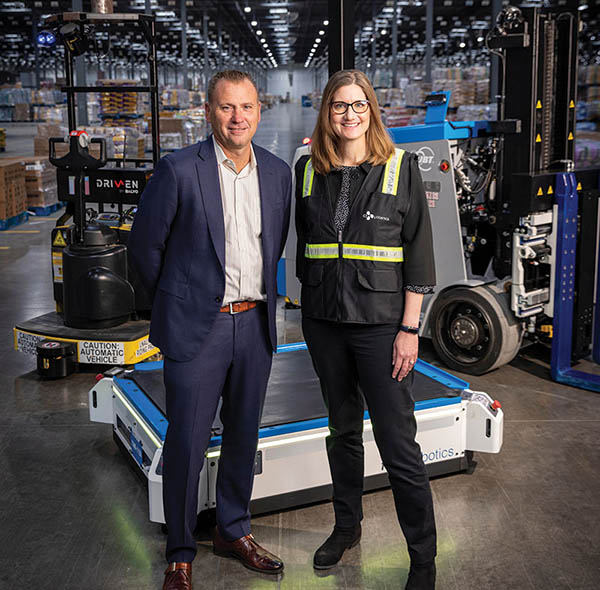
AFLs would pick up pallets in receiving and then automatically put them away in storage locations. The automated lift trucks would also pick and deliver pallets to outbound staging. Ultimately, the AFLs would also be used for automated trailer loading and unloading.
In addition, CJ Logistics planned to use EPTs for non-value-added pallet movement. The EPTs are essentially autonomous pallet jacks that can move four pallets at time. Since they can only lift a pallet 6 in. (2.3 cm) off the floor, they are only used for transport. An example of a task might be moving a pallet from one business unit to another where it’s combined with other pallets for an order.
Voice and put-to-light were initially used interchangeably to direct case picking. Eventually, CJ Logistics went to a multi-modal solution that combines vision-directed picking with voice that’s used to capture lot information, which can be more easily inputted by voice.
“Once we developed a roadmap for what we wanted to do, we realized we had to find a solution to integrate these new technologies with our WMS,” Adams said.
But the goal wasn’t just to integrate with Blue Yonder. CJ Logistics wanted a platform that was WMS-agnostic so that it could add or remove technologies as requirements change or roll it out to other facilities with similar requirements.
“We needed to connect to Blue Yonder today, but our ultimate vision is to develop a robotics hub that can integrate with whatever WMS our customer wants us to use,” said Coleman. “For instance, a manufacturing company may want to use EWM [Extended Warehouse Management] from SAP. Being flexible is key to our strategy.”
Late in 2020, Blue Yonder introduced CJ Logistics to SVT Robotics.
There’s a platform for that
SVT Robotics was founded by two former Swisslog executives who had experienced firsthand the frustration of trying to integrate disparate technologies from a number of different vendors when they worked on an automation project in a new automotive assembly plant.
Left to systems integrators and solution providers, integration took months, required tremendous amounts of new coding, and still didn't yield optimal results. The executives found inspiration in the electric grid. Regardless of what’s involved in making a computer, monitor, and keyboard work, from a power standpoint, when they’re plugged into electrical sockets, they all work.
Why couldn’t the same concept work for integration on a plug-and-play, cloud-based platform? Done right, it would allow for the rapid deployment or reconfiguration when requirements change, without custom coding. SVT Robotics called its platform “Softbot.”
“On behalf of the market, we prebuild Softbot connectors to leading technologies across the industry, including automatic guided vehicles [AGVs], AMRs, conveyors, sorters, WMS and e-commerce shipping platforms, to name a few,” said T.J. Fanning, vice president of growth at SVT Robotics. “By prebuilding the connectors, we can integrate multiple robotic and automation systems, build solution sets, validate them, and then have them in CJ Logistics’ toolbox so they can be redeployed to other customers.”
Softbot handles orchestration
SVT's platform also handles orchestration decisions so that, for instance, a task for pallet movement on the dock can be assigned to an EPT rather than an AFL if it just involves travel without putaway.
In another example, lot capture was not a requirement for every product, so using the platform, CJ Logistics could determine which zones needed it to be available.
According to Fanning and Adams, the software stack was installed and ready for deployment once the hardware was procured and delivered to the facility. Then, each of the individual solutions was enabled. For example, CJ Logistics rolled out AMRs from Fetch for case picking.
Then over about six weeks, the company rolled out smart-glass vision technology, voice, and finally put-to-light. It rolled out the other hardware, including EPTs and AFLs, as it arrived.
SVT Robotics meets changing requirements
One way in which CJ Logistics pivoted during its deployment of robotics was a new requirement to capture lot information. The 3PL worked with SVT Robotics to create a new multi-modal case picking process.
An associate receives information about the pick location, SKU, and quantity through smart glasses and then confirms the lot information with voice. Thanks to the pre-built connectors, it was relatively simple to integrate the technologies for that process.
The platform also allowed CJ Logistics to manage how tasks were rolled out to its operators and to switch back and forth between existing and new processes during the changeover as required.
“If we wanted to use part of the week for training and then concentrate on throughput with the existing processes the rest of the week, we could change which process we were using through the platform,” Adams explained.
While SVT Robotics engineers were on-site at first, within two to three months, they no longer had to be present for all three shifts per day.
CJ Logistics expands tool kit
CJ Logistics has been working with the new technologies and integration platform for about a year. The most important benefit is that it expands the tool kit, said Adams and Coleman. This enables CJ Logistics to quickly adjust to its customers’ changing requirements with new technologies as they emerge.
“There is no one solution that will fit every customer and every facility,” Adams said. “Once we have a connector on the platform, we can bring together the best components for each customer profile.
About the Author
Follow Robotics 24/7 on Linkedin
Article topics
Email Sign Up

